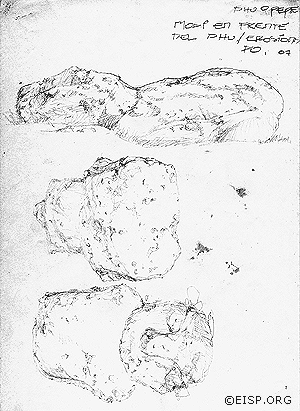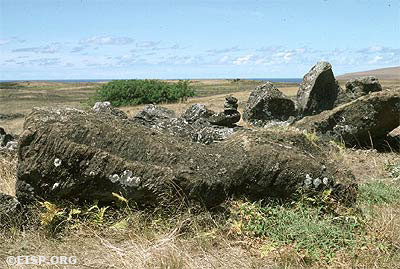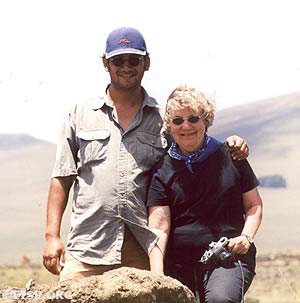Easter Island Statue Project Official Website
Ahu O’Pepe 20-001
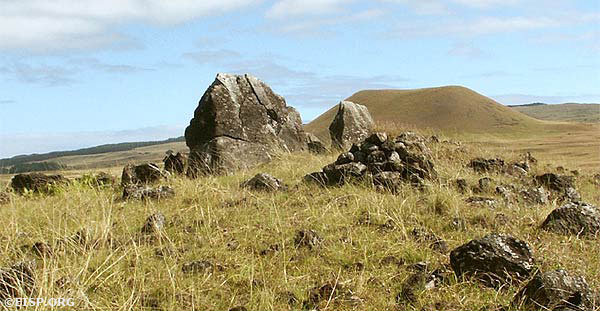
Ahu O'Pepe (20-001), an inland ahu, once held seven moai and as such may be compared to Ahu Akivi (16-001).. © 2003 EISP/JVT/Photo: A. Perlin.
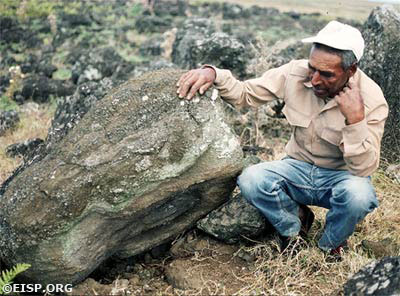
Felipe Teao A. with a torso, recarved into bas-relief komari (vulva). ©1987 EISP/JVT/Photo: D. C. Ochsner.
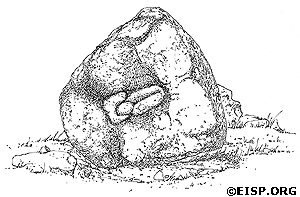
Drawing of moai Torso 20-001-006 recarved as a bas-relief komari (vulva), Ahu O'Pepe©1991 EISP/JVT/Drawing: C. Arévalo P.
RELATED RECORD: Two moai removed from Ahu O’Pepe are currently at the National Museum of Natural History, Smithsonian Institution.
 English
English  Español
Español 